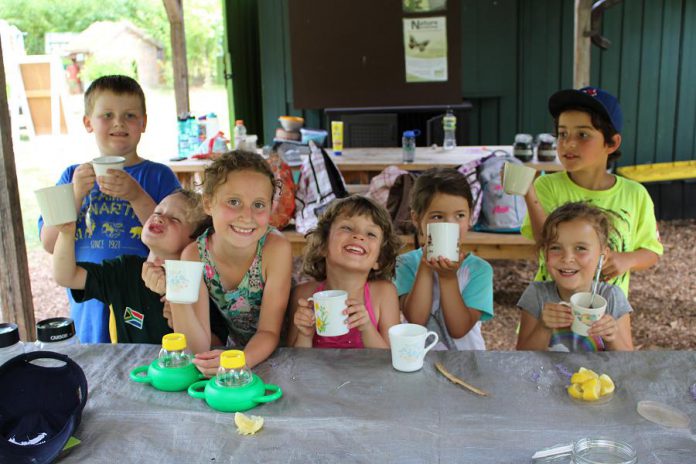
The next time you reach for your favourite thirst-quenching lemonade or soda, take a peek at the nutritional label and see how much sugar has been added. Many popular brands of pop and juice contain upwards of 40 grams of sugar per serving!
Beverages that are sweetened with sugar are the largest source of sugar in most kids’ diets. Sweetened drinks are actually marketed towards children and parents and are readily available at most concession stands, pop machines, and on the grocery store shelves. This is contributing to childhood obesity and unhealthy body weight in kids.
Tap water, a much healthier option, is a readily available alternative. It helps to keep kids’ bodies hydrated and healthy and also reduces the waste associated with packaging of single servings of juices, pop, and bottled water.
Unfortunately, healthy flavoured alternatives to water or juice are not widely available — but making your own is a fun way to enhance tap water and it can be done with plants from your own backyard!
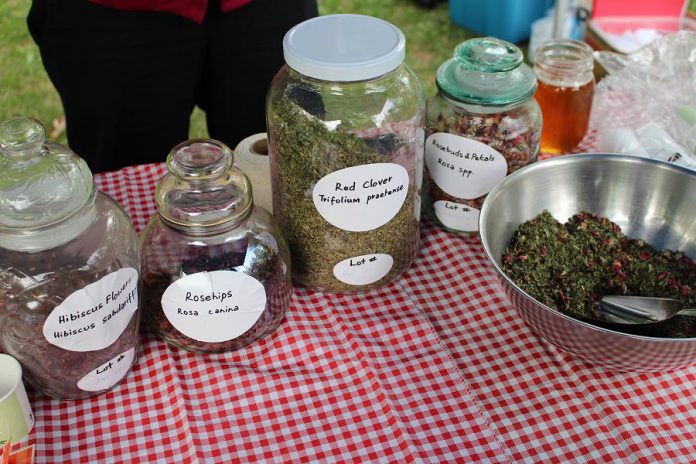

The Peterborough region has seen a great in increase in the number of community gardens. Schools are also incorporating gardening into learning outside the classroom walls. Consequently, kids in this region are gaining interest in gardening, hands-on skills with tools, and the ability to identify plants.
With this type of enthusiasm in our community for growing our own food, there is an opportunity to get kids involved with planting, growing, and tending to their favourite plants for flavouring water — and some of these plants may already be growing in your yard.
Naturally flavoured water can be made with local plants such as Rose, Lavender, Mint, Red Clover, and Plantain. Leaves, flowers, roots, and other parts of certain plants can be harvested, dried, and tied into cheesecloth with string to make homemade bags. The bags can be then be used to infuse water that can be consumed as a warm tea or a cold, refreshing thirst quencher.

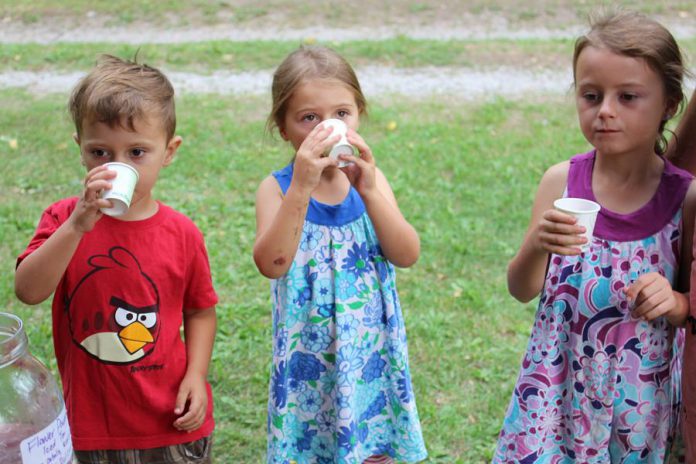
Marianne Beacon of Elderberry Herbals suggests, “Kids really enjoy the fruity flavours of Rosehips and Hibiscus flowers and will also benefit from the health benefits of vitamin C that come along with it.”
She also recommends starting early with children when they are young, so they can learn to experiment with their favourite flavours and become accustomed to making blends they enjoy most.
Recently, Marianne presented at GreenUP Ecology Park as part of the Nature Nocturnes evening programs with Healthy Kids Community Challenge Peterborough. Children had the opportunity to participate in making infused water from various local plants, which encourages the benefits of improved healthy behaviours experienced when kids choose delicious and healthy food options.
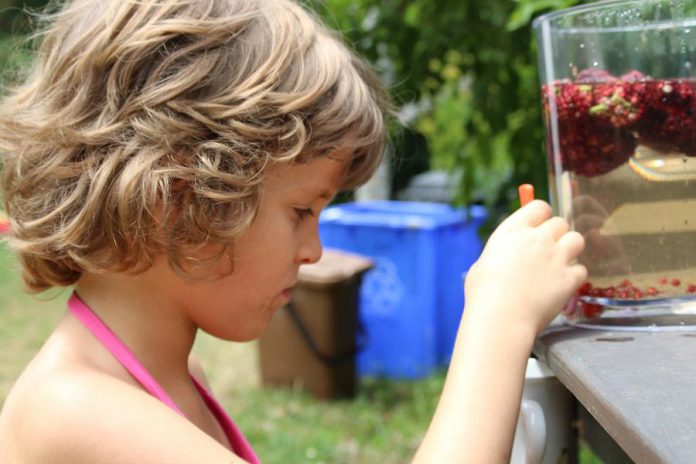
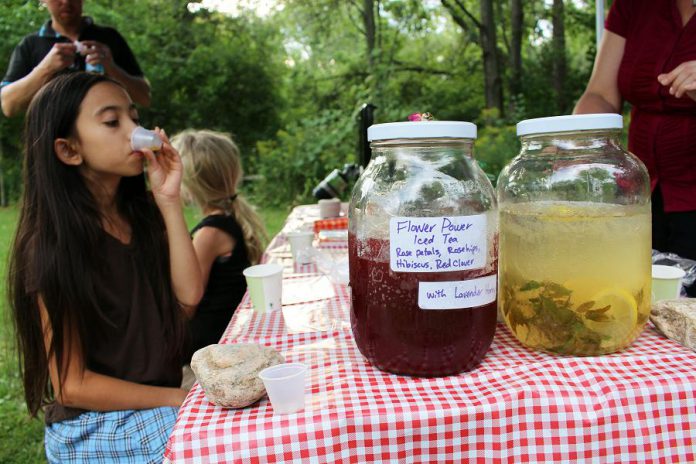
Marianne demonstrated how to make infused water for kids and families.
“When using leaves, harvest them before the flower blooms, and when using flowers, pick them when they are freshest.”
Plant parts can be hung or laid flat to dry with lots of room between stems and leaves for air to circulate. Once dried, store them in a cool, dry location such as a glass jar or paper bag.
Of course, it is also important to ensure you have correctly identified the plant you want to harvest — so that you know it is safe to consume and that it is not endangered. Native species such as Wild Ginseng, Goldenseal, and Lady Slipper are rare and struggling in their native ranges and must be left alone.
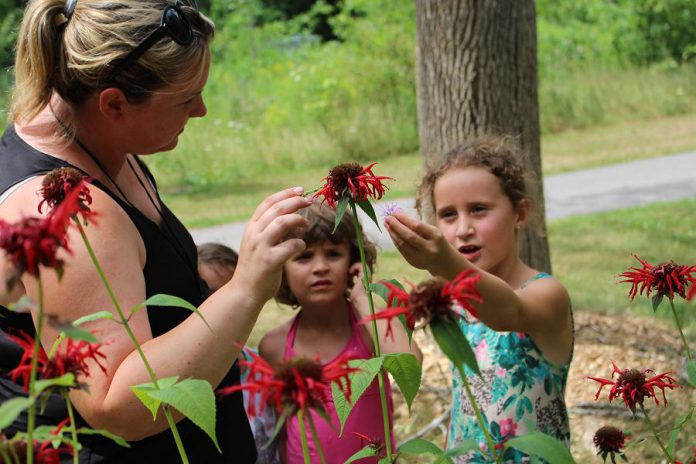
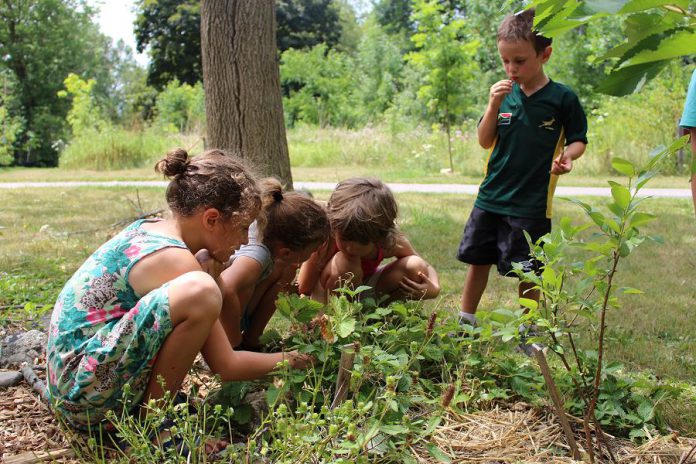
Infusing your tap water with homegrown herbs and flowers is a great way to hydrate, stay healthy, and enjoy your garden in a new way.
For opportunities to learn more about making homemade and homegrown infused water, watch the GreenUP online calendar and the workshops page at www.greenup.on.ca or visit herbalist Marianne Beacon’s website at www.elderberryherbals.ca.
To learn more about Healthy Kids Community Challenge Peterborough, visit www.sustainablepeterborough.ca.
All photos by Karen Halley of GreenUP.


























